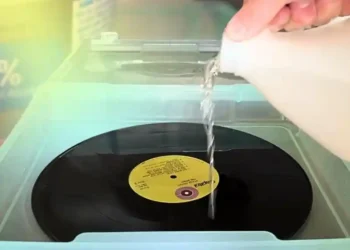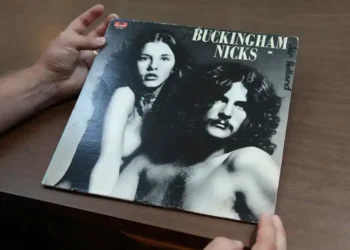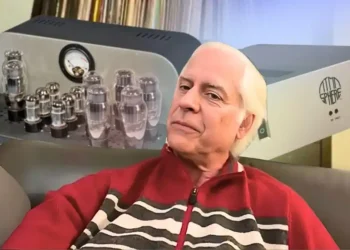Vinyl’s Future at Risk: Industry on Edge as Last Lacquer Supplier Struggles to Keep Up
The vinyl revival may sound like a success story — but behind every warm, analog groove lies a fragile reality: the entire industry depends on a single factory. And if that last supplier falters, the music could stop for good.
From Vintage Revival to Modern Crisis
Vinyl records have made a major comeback in the digital age, winning over new listeners and remaining a must-have for audiophiles who value sound quality and physical music collections. But while sales are booming, the supply chain that supports vinyl production is hanging by a thread — and it all comes down to one essential but endangered component: lacquer discs.
Before any record hits the shelves, music must be etched into a lacquer-coated aluminum disc — the master used to create stampers for pressing vinyl. This step is non-negotiable for traditional vinyl production. Without lacquer, there’s no master. Without a master, there’s no record.
A Fragile Legacy: The Collapse of Lacquer Supply
Once upon a time, there were multiple lacquer suppliers — from Pyral in France to EMI’s Emidisc in the UK. But as CDs and MP3s dominated the market, demand for vinyl dried up. One by one, these companies shut down.
By the late 1990s, only two major lacquer manufacturers remained: Apollo Masters in California and Public Record Co. (MDC) in Japan. Apollo supplied up to 85% of the world’s lacquer discs. MDC handled the rest.
This uneasy balance kept the industry afloat — until tragedy struck.
The 2020 Apollo Fire That Changed Everything
On February 6, 2020, a massive fire destroyed the Apollo Masters facility in California. In a matter of hours, the world’s main lacquer source vanished — along with the decades of experience needed to make it.
Suddenly, the entire industry was leaning on MDC, a smaller operation in Japan never meant to carry such a heavy load. Shortages began immediately. Orders were rationed. Release schedules were pushed back. And though some engineers preferred MDC’s consistency, the global supply chain was now more fragile than ever.
Why No One’s Replaced Apollo
Building a new lacquer factory isn’t just expensive — it’s dangerous. Lacquer discs are made with nitrocellulose, a highly flammable material once used in film reels that could ignite with a spark. Producing them safely requires explosion-proof facilities and tight environmental controls.
Even if someone cleared the regulatory hurdles, they’d still face a massive knowledge gap. The techniques and chemistry used to make high-quality lacquers were never fully documented — and much of it was lost in the Apollo fire.
As of 2025, no new lacquer supplier has successfully emerged. That leaves MDC in Japan as the last thread holding the vinyl industry together.
How the Industry Is Adapting
In the face of uncertainty, the vinyl world has gotten resourceful:
- Mastering studios are rationing lacquer discs
- Pressing plants are reusing metal stampers
- Labels are minimizing test pressings
- Some are shifting to Direct Metal Mastering (DMM)
DMM skips lacquer entirely by engraving music directly onto copper plates. It’s precise and modern, with less surface noise — but it also changes the sound. Some love its clarity; others miss the classic warmth only lacquer provides. And scaling DMM is tough: the machines are rare, and most are still in Europe.
These workarounds help, but they’re not permanent solutions.
High-Tech Hope — or False Start?
The industry has explored cutting-edge alternatives. One of the most hyped was HD Vinyl, which uses lasers to carve music into ceramic stampers. In theory, it’s cleaner, faster, and eco-friendlier.
But in reality? It hasn’t delivered. Prototypes fell short on sound quality, and the technology remains stuck in development.
Other experimental methods — like laser-cut or 3D-printed records — are more novelty than solution. They’re fun, but fidelity suffers. So for now, they’re better suited to art installations than actual listening.
A Single Factory Keeps the World Spinning
As of now, every new vinyl record starts with a lacquer disc made at a small plant in Matsudo, Japan. Thanks to careful planning and sheer perseverance, the industry has kept going — and sales are still climbing.
But the risks remain. One fire, one mechanical failure, one supply chain glitch — and global vinyl production could grind to a halt.
Efforts are underway to develop new production facilities. But they’re slow, expensive, and uncertain. Until then, the survival of vinyl records rests on a mix of craftsmanship, improvisation, and luck.
Each record you buy isn’t just music — it’s a small miracle.
Source: Headphonesty – The Entire Vinyl Industry Hangs by a Thread as the Last Lacquer Supplier Faces Collapse

















